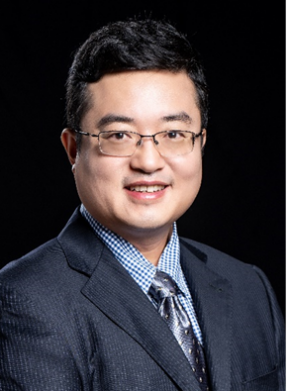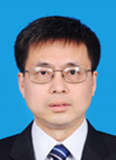
Speakers
| Prof. Rui Zhang, IEEE Fellow, Academician of Singapore Academy of Engineering School of Science and Engineering,The Chinese University of Hong Kong, Shenzhen Dr. Rui Zhang received the B.Eng. (First-Class Hons.) and M.Eng. degrees from National University of Singapore, and the Ph.D. degree from Stanford University, Stanford, CA USA, all in electrical engineering. From 2007 to 2009, he worked as a researcher at the Institute for Infocomm Research, ASTAR, Singapore. In 2010, he joined the Department of Electrical and Computer Engineering of National University of Singapore, where he was appointed as a Provost’s Chair Professor in 2020. Since 2022, he has joined the School of Science and Engineering, The Chinese University of Hong Kong, Shenzhen, as a Principal’s Diligence Chair Professor. His current research interests include UAV/satellite communication, wireless power transfer, intelligent reflecting surface and reconfigurable MIMO, optimization methods, etc. He has published over 450 papers in the field of wireless communications, which have been cited more than 60,000 times, with the h-index over 120. He has been listed as a Highly Cited Researcher by Thomson Reuters / Clarivate Analytics since 2015. He was the recipient of the IEEE Communications Society Asia-Pacific Region Best Young Researcher Award in 2011, the Young Researcher Award of National University of Singapore in 2015, the Wireless Communications Technical Committee Recognition Award in 2020, and the IEEE Signal Processing and Computing for Communications (SPCC) Technical Recognition Award in 2021. He received 14 IEEE Best Paper Awards, including the IEEE Marconi Prize Paper Award in Wireless Communications in 2015 and 2020, the IEEE Signal Processing Society Best Paper Award in 2016, the IEEE Communications Society Heinrich Hertz Prize Paper Award in 2017, 2020 and 2022, the IEEE Communications Society Stephen O. Rice Prize in 2021, etc. He is now an editor for the IEEE Transactions on Communications. He served as a member of the Steering Committee of the IEEE Wireless Communications Letters, and a Distinguished Lecturer of IEEE Signal Processing Society and IEEE Communications Society. He is a Fellow of the IEEE and the Academy of Engineering, Singapore. Title:Accessing From Sky: UAV/Drone Communications for 5G and Beyond
Unmanned aerial vehicles (UAVs) or drones are expected to have abundant applications in future wireless networks, as either aerial user terminal or mobile access point/relay. Compared to conventional terrestrial wireless systems, UAVs' communications face new challenges due to their high altitude above the ground and great flexibility in movement, bringing several critical issues such as how to exploit the line-of-sight (LoS) UAV-ground channels while mitigating the strong interference, cater to the stringent constraints imposed by the size, weight, and power (SWAP) limitations of UAVs, as well as leverage the new degrees of freedom via optimizing the UAV trajectory/placement for communication performance enhancement. In this talk, we will provide an overview of the above challenges as well as their state-of-the-art solutions with an emphasis on the UAV trajectory design and aerial-ground interference mitigation. Finally, we point out important directions for future research. |
| Prof. Jizhong Zhu, IEEE Fellow South China University of Technology, China Jizhong Zhu is a Professor of South China University of Technology, and National Distinguished Expert. He is an IEEE Fellow, IET Fellow, CSEE Fellow, AAIA Fellow, IEEE PES Smart Building, Loads, Customer Systems Technical Committee member, Chair of IEEE SBLC Load Subcommittee, Chair of IEEE SBLC Asia-Pacific Working Group, IEEE SMC Technical Committee on Intelligent Power and Energy Systems Technical Committee member. He is also an Expert of IEEE 2030.9 Standard WG on Micro-grids, Expert of International Electrotechnical Commission WGs IEC SEG6, IEC TC22 AHG1, IEC TC22 AHG2, respectively, and Chair of IEEE Standard IEEE P2781 - Load Modeling and Simulation for Power Systems. Dr. Zhu has worked at ALSTOM Grid Inc. in Washington State, Howard University in Washington, D.C., the National University of Singapore, Brunel University in England, and Chongqing University in China. He was a Senior Principal Power Systems Engineer as well as a Fellow with ALSTOM Grid Inc., and an honorable advisory professor of Chongqing University. He has published six books as an author and co-author, as well as about two hundred papers in the international journals and conferences. His research interest is in the analysis, operation, planning and control of power systems, smart grid, power markets as well as applications of renewable energy. Title:AI based wind power forecasting method considering shape and time loss Abstract: This presentation reports an artificial intelligence (AI) method to predicate wind power, which considers shape and time loss. First, it uses a two-layer Gated Recurrent Unit (GRU) to build a wind power time series forecasting model. Then, it uses differentiable dynamic time warping (DTW) to construct shape and time loss (STL) to improve the loss function of GRU. The proposed STL approach decouples the shape and time of the time series and provides the metrics of the two respectively. Finally, the test results on the wind power data of the Global Energy Forecasting Competition 2014 (GEFCom2014) show that compared with the traditional mean squared error (MSE) loss, the STL has a higher prediction accuracy under non-linear and non-stationary time series. |
| Prof. Jian Yao Wuhan University, China Yao is a professor, Doctoral Supervisor, Distinguished Professor of "Chutian Scholar" Program of Hubei Province, Discipline Development Leader of the School of Remote Sensing Information Engineering of Wuhan University, a candidate of the National Major Talent Project A-type Youth Project, a member of the Strategic Talent Training Program of Changsha, a high-end talent of the 3551 Entrepreneurship and Innovation Program of Wuhan, a student of the Class 2019 of Baidu Alpha College, a leader of the Artificial Intelligence College of Guangdong Open University, director of the Artificial Intelligence Application Innovation Center of Guangdong Open University, dean of Research Institute of Desauto Technology (Shenzhen) Co., Ltd., Professor of Xiamen University of Aeronautics and Astronautics, distinguished researcher of Songhua River Thousand People Industry Research Institute, director of Wuhan University Computer Vision and Remote Sensing Lab (WHU-CVRS Lab), director of 3D Big Data Artificial Intelligence Innovation Research Center of Wuhan University, incumbent Member of the Chinese Society of Artificial Intelligence, member of the Computer Vision Professional Committee of the Chinese Computer Society (CCF), member of the Imaging Detection and Perception Committee of the Chinese Society of Image and Graphics, member of the Machine Vision Specialty Committee of the Chinese Society of Image and Graphics, member of 3D Vision Specialist Committee of the Chinese Society of Image and Graphics, member of the Big Data and Artificial Intelligence Working Committee of the Chinese Society of Surveying and Mapping, and director of the New Overseas Chinese Professionals Association of Hubei Province and Wuhan City. In April 2012, he was introduced to the School of Remote Sensing and Information Engineering of Wuhan University as a discipline development leader and has been a faculty member since then. He was invited as a specially-appointed professor of “Hubei Scholar” Program of Hubei in 2013. He has participated in many large-scale projects such as the EU's sixth and seventh framework plans, as well as cooperation projects with the International Atomic Energy Agency. In recent years, he has published over 130 papers on international journals including Pattern Recognition, Computer Vision & Image Understanding, International Journal of Robotics Research, IEEE Transactions on Image Processing, ISPRS Journal of Photogrammetry and Remote Sensing, IEEE Transactions on Geoscience and Remote Sensing (TGRS) and CVPR, applied for over 70 IPs and patents, with 30 authorized by the Chinese government. He has long been a reviewer of top journals and conference proceedings. After joining Wuhan University, Prof. Yao has established the WHU-CVRS Lab, which now consists of four advisors, one postdoctoral fellows, 30 PhDs and master students. Title: Challenging issues and key technologies for multi-image fusion |
| Professor Xiaofang Yuan Hunan University, China
Yuan Xiaofang, PhD, Professor in Hunan University, doctoral supervisor. He is mainly engaged in intelligent control theory and application, electric vehicle control and other aspects of research work. He has presided over more than 10 projects, including general projects of National Natural Science Foundation of China, youth projects of National Natural Science Foundation of China, special postdoctoral projects of China, science and technology plan of Hunan Province and Doctoral Program Fund of Ministry of education.He has more than 50 papers have been published in IEEE Transactions and other international authoritative journals in the field of control, including 40 SCI papers. Title: 3D Map-based Path Planning for Autonomous Vehicles Abstract: In the traditional vehicle area, energy-based motion control technology and battery technology are usually employed to solve the energy-saving problem for vehicles. Our research proposes a new solution from the perspective of path planning. For vehicles traveling on the complex 3D terrains, the energy consumption of up-slope is far greater than that of the flat road and down-slope. To realize this, a path with a good trade-off between the energy consumption and distance would be the expected route for electric vehicle and mining transportation. A novel multi-objective path planning method is investigated to solve this problem for EV and mining truck. The simulation experiments prove that the proposed method can generate an optimal path which saves much energy in comparison with the path provided by the distance-based method. |



